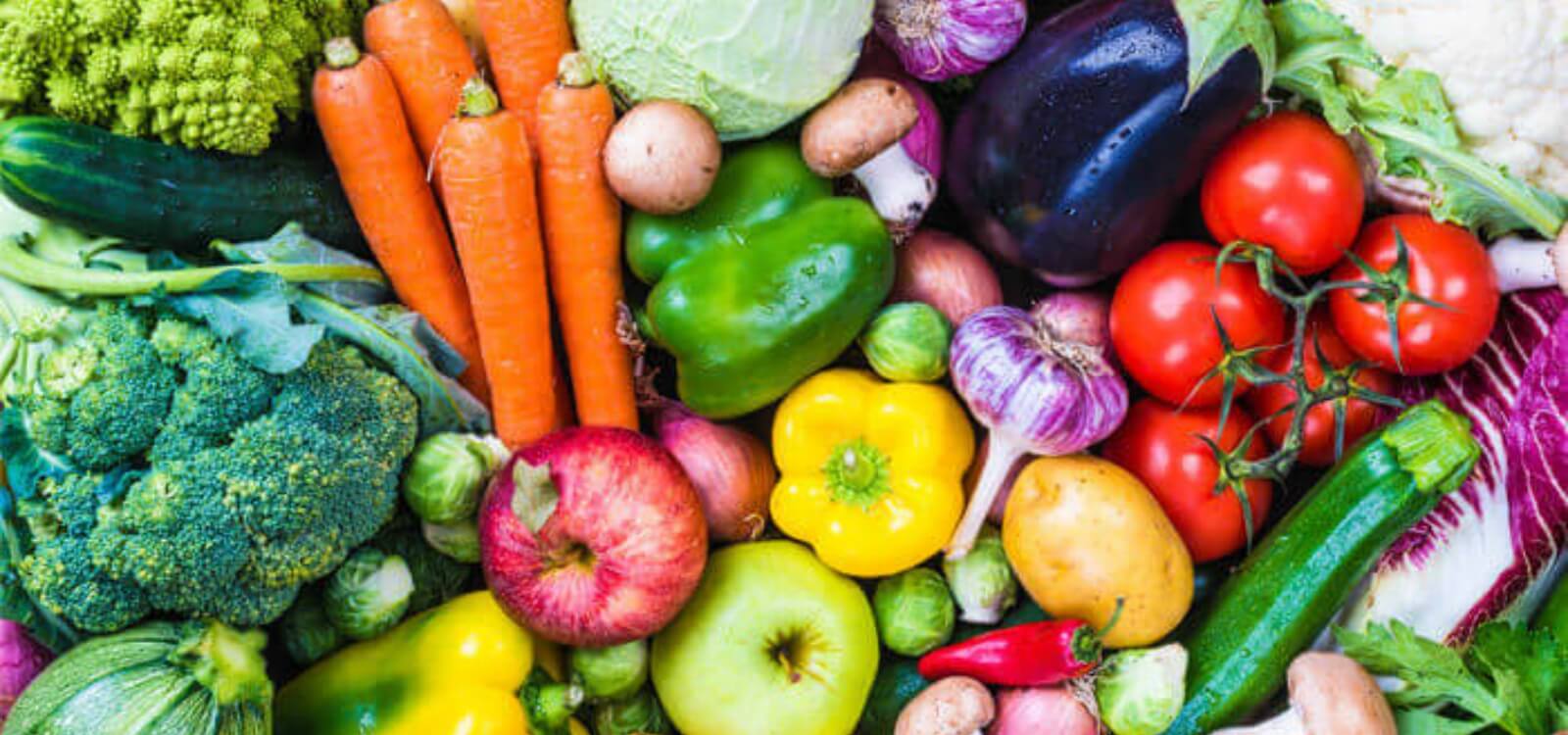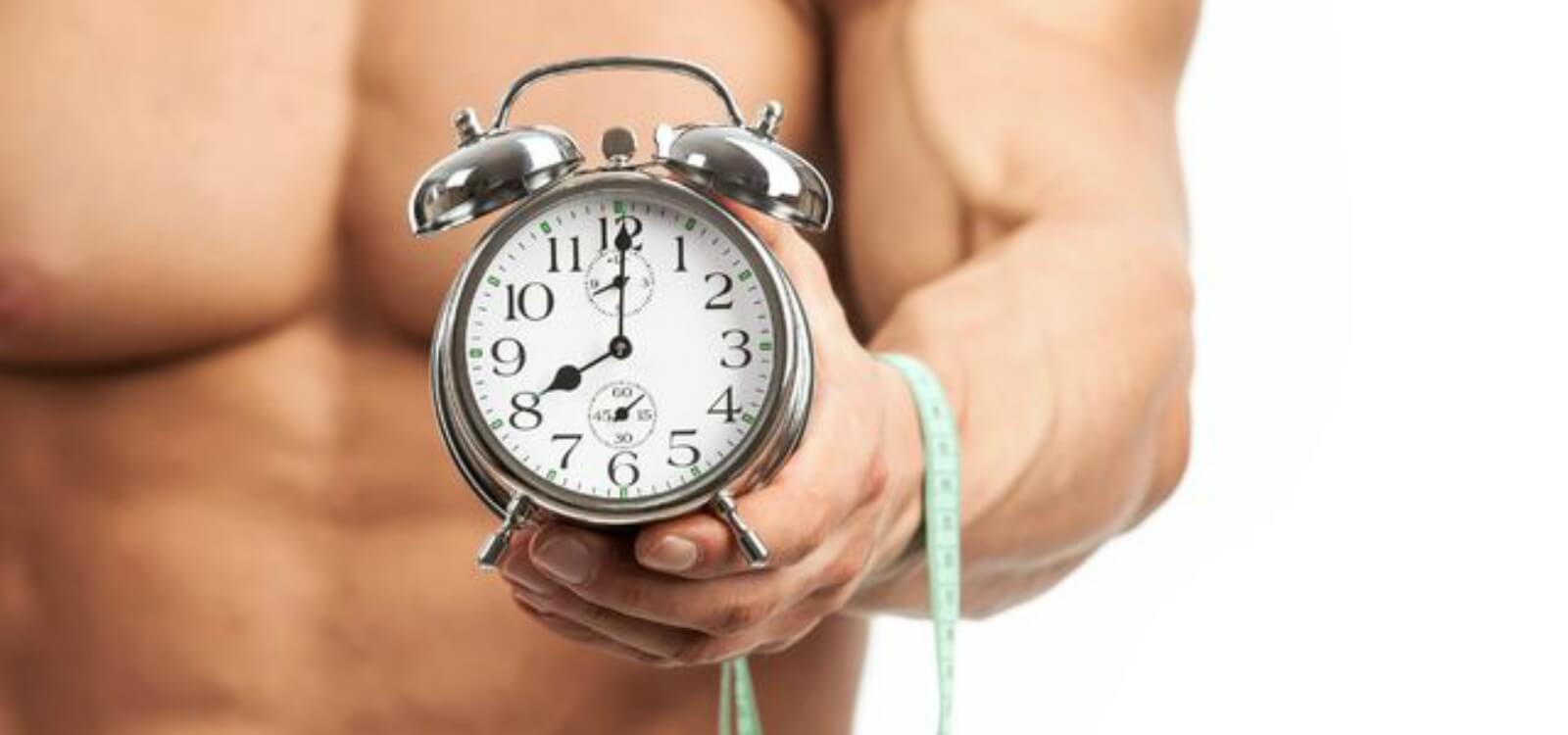Key Takeaways
- Following a meal plan is the best way to lose weight, learn what proper portion sizes look like, and improve your body composition.
- On the other hand, meal planning can become boring, unnecessary, and counterproductive if you keep it up for too long.
- Once you’ve been following a meal plan for several months, you can continue to lose fat if you eat enough protein, stick to mostly whole, nutritious, and filling foods, and follow the other 5 steps in this article.
Chances are good you’ve struggled to lose fat before.
Maybe you tried clean eating.
Or detoxing.
Or low-carb dieting.
None of it stuck, though, and you’re ready to try something different.
So, after some Googling, you learn about meal planning.
You like the idea of knowing exactly what, when, and how much you’re going to eat every day. No wondering if you’re eating the right foods, sticking to the right meal schedule, or eating too much.
On the other hand, you don’t like the idea of planning, preparing, and packaging all of your meals for the day (or week) in advance. It looks like a part-time job.
Is there a way to have your cake and eat it, too?
To get lean without being so rigid?
Well, yes, and you’re going to learn how in this article.
The long story short is that you should follow a strict meal plan for a few months if you want to guarantee that you lose weight. Once you’ve made some headway, though, you can transition away from a strict meal plan and continue losing fat with a few simple habits.
Let’s start by looking at why you should try meal planning.
Why You Should Follow a Meal Plan (For a While)

It’s easy to find people online who say that following a meal plan is an arcane, masochistic, and misguided way to lose fat.
“No one can stick to a meal plan long term.”
“They’re too hard to follow.”
“They hurt your relationship with food.”
It’s true that meal plans aren’t without their drawbacks, and there’s no shortage of orthorexic fitness zealots who give the practice a bad name.
Like any tool, though, whether or not it’s bad or good depends on how you use it.
On the whole, meal planning is one of the single best ways to get the body you want for a few reasons.
Following a meal plan guarantees you’ll lose weight.
So do detox, paleo, and vegan diets.
They all work.
If you follow any diet that restricts what, how much, or when you can eat, you’re going to lose weight…at first.
The problem with these diets is that over time, most people begin to eat more and more of the “approved” foods, and weight loss grinds to a halt.
That’s because all of these restrictions are really designed to do one thing: help you eat fewer calories.
This might sound overly simplistic, but the science on this is clear: The only reason anyone has ever lost weight is because they ate fewer calories than they expended over time.
Some diets will help you do that indirectly, but unless you also control your calorie intake, losing weight is always going to be something of a guessing game.
Meal planning changes that.
Determine how many calories you need to eat to lose weight, plan your meals to hit that number, and you will lose weight regardless of what foods you eat or when you eat them.
Following a meal plan teaches you proper portion sizes.
People are notoriously bad at estimating how much they eat.
Many people wonder why they can’t just “listen to their body,” eat when they’re hungry, and lose weight.
The answer is simple: you eat for many reasons other than hunger. We all do.
For example, if we eat from slightly bigger than normal packages and plates, our calorie intake can rise by as much as 31%, and without us ever realizing it.
This is because our hunger levels are largely influenced by what we see, not just by how much food we truly need.
Even when we know we’ve eaten enough, if someone shows up with a plate of fresh-baked cookies, our brain can suddenly shift back to “hungry.”
An elegant example of this is found in a study wherein some of the participants were given bowls of soup that would secretly refill as they ate.
Everyone was allowed to eat as much as they wanted, and the people eating out of these “bottomless bowls” ate about 73% more than the people eating out of regular bowls.
The researchers periodically asked them if they were full, and the most common response was, “How can I be full, I still have half a bowl left?”
Meal planning helps you avoid these traps.
By eating only the foods on your plan, you’ll learn the calorie content of different foods and what portion sizes you should eat to hit your calorie goals every day.
Following a meal plan is key for improving your body composition.
Most popular weight loss diets have two things in common:
- The provide very few calories.
- They provide very little protein.
And this works well—follow that plan and you will lose weight fast.
If you look at your body composition, though, then it’s clear this approach does more harm than good.
You see, when you’re in a large calorie deficit and eating too little protein, you lose fat, but you also lose quite a bit of muscle as well and your metabolism slows down markedly.
Hunger also skyrockets after a few weeks, leaving you primed to binge back much of the weight you lost.
This is because there’s a point of diminishing returns when it comes to calorie restriction. Reduce your calorie intake slightly, and you can lose weight consistently without excessive hunger, cravings, or muscle loss.
Try cutting calories too much, though, and all of those problems can spiral out of control.
These problems are only made worse when you also don’t eat enough protein. Study after study after study has shown that people who follow a high-protein diet lose less muscle, experience less hunger, and burn more calories when they restrict their food intake.
Creating a meal plan solves all of these problems.
You can make sure you’re eating enough calories to lose weight quickly, eating enough protein to maintain (or gain) muscle, and eating foods you enjoy to keep cravings under control.
At bottom, meal plans are mostly pros with few cons, but those cons are worth covering, too. Let’s go over those next, shall we?
The Problem with Meal Plans

There’s one big problem with meal planning:
It takes some effort, time, and foresight, and eating the same foods for weeks or months can get boring.
After you’ve been practicing healthy eating habits for a while, meal planning also becomes less important. You’ll develop a good sense of how much, when, and what to eat, and you won’t need to eat the same thing every day to avoid falling off the wagon.
Plus, there are other benefits to this kind of “intuitive eating” style.
“Intuitive eating” is a scientific term that involves controlling what and how much you eat based on your body’s internal cues, rather than meal plans or other external means.
People who learn to practice intuitive eating are generally better at sticking to their diets and tend to be less stressed and happier with their bodies.
It’s easy to mess up intuitive eating if you haven’t followed a more regimented plan before, but it can work quite well once you have some dieting experience under your belt.
The plan I’m about to show you is more or less an “intuitive eating” approach to losing fat.
Keep reading to learn how it works.
How to Get Lean without Following a Meal Plan in 7 Steps
If you enjoy meal planning, there’s no reason to stop.
If you’re ready for something different, though, then you need to tread carefully.
Once you step away from the structure of a meal plan it’s very easy to let your diet get out of control. Instead of just “eating by feel,” you’re going to stick to the following 7 steps:
- Ensure you get enough protein every day.
- Eat mostly whole, nutritious, filling foods.
- Stick to the same meal schedule every day.
- Include some treats in your diet.
- Cook at home (most of the time).
- Keep weighing yourself every day.
- Try intermittent fasting.
Let’s start with step 1.
Step 1
Ensure You Get Enough Protein Every Day
Protein is your staple nutrient for maintaining your muscle while losing fat.
Thus, your first priority is getting enough every day.
A good rule of thumb is to shoot for getting about 1 gram of protein per pound of body weight every day.
It’s fine if you eat slightly more or less than that on some days, but that’s the average to shoot for.
For example, I weigh 180 pounds, so I’d want to eat about 180 grams of protein every day. Let’s call it 160 to 200 grams per day.
A simple way to make sure you’re getting enough is to divide your daily protein target evenly across every meal.
For example, if I eat four meals per day that means I need to eat about 40 to 50 grams of protein in each meal.
The easiest way to keep track of your intake is a diet app like MyFitnessPal, Cronometer, or MyMacros+ which will allow you to research and track the nutrition data of the food you’re eating or thinking about eating throughout the day. This takes the guesswork out and helps you make better choices about what you’re eating.
Once you’ve been using an app to track your protein intake for several weeks, you may also be able to eyeball your portions instead. It’s a good idea to occasionally “audit” your protein intake with one of these apps, though, just to be safe.
Step 2
Eat Mostly Whole, Nutritious, Filling Foods

Your diet off of a meal plan should be more or less the same as your diet “on” a meal plan.
If you ever want to maintain your ideal physique without having to plan and track everything that you eat, then you’d better get used to eating a lot of relatively unprocessed, nutritious foods.
This is the “secret” to effortless weight maintenance, because most “healthy” foods tend to be lighter in calories, very filling, and nutritious.
In short, they’re the types of foods that work best with your body’s natural mechanisms for regulating appetite.
Highly processed foods, on the other hand, tend to be very high in calories yet not nearly as filling or nourishing, which, in a sense, “short circuits” these mechanisms, making it much easier to overeat.
A good rule of thumb is to eat at least 5 servings of vegetables and 2 servings of fruit per day. Yes, that’s higher than the normal recommendations, but this goes a long way in controlling your appetite.
Here are some of my favorite vegetables:
- Asparagus
- Beans (green)
- Beetroot
- Bok choy and other Asian greens
- Broccoli
- Brussels sprouts
- Cabbage
- Carrots
- Cauliflower
- Celery
- Cucumber
- Eggplant
- Garlic
- Kale
- Leeks
- Lettuce
- Mushrooms
- Onion
- Parsnip
- Radish
- Arugula
- Spinach
- Tomato
- Zucchini
And here are some of my favorite fruits:
- Apples
- Bananas
- Blueberries
- Grapes
- Kiwi
- Mango
- Oranges
- Peaches
- Pears
- Pineapple
- Raspberries
- Strawberries
- Watermelon
It’s also a good idea to get most of your protein and fat from whole foods as well.
Here are some of my favorite proteins:
- Chicken breast
- Salmon
- Ground turkey
- Ground beef
- Lean sirloin
- Tilapia
- Shrimp
- Cod
- Greek yogurt
- Cottage cheese
And are some of my favorite fats:
- Avocados
- Dark chocolate (70+%)
- Olive oil
- Fatty fish
- Almonds, cashews, peanuts, and walnuts
- Whole fat dairy products
Make sure you get at least 80% of your calories from foods like these, which leaves 20% of your calories for less nutritious, filling, or whole foods.
Step 3
Stick to the Same Meal Schedule Every Day
Unplanned snacks ruin diets.
One of the fastest ways to wipe out your calorie deficit is to graze on extra calories throughout the day.
A handful of nuts, a piece of fruit, and a cup of yogurt is all it takes.
Your body also tends to get hungry at the same times you normally eat, so sticking to your normal meal pattern is an easy way to prevent hunger between meals.
If you want to keep things as simple as possible (my recommended approach), eat roughly the same size meals at the same times you always do.
Setting specific meal times also makes it easier to say “no” to any tempting foods that you might encounter during the day.
Step 4
Include Some Treats In Your Diet

If you can’t say no to treats sometimes, you’ll never be able to lose weight.
On the other hand, that doesn’t mean that always saying no is the right answer, either.
Studies have shown time and time again that people who practice what’s called “flexible restraint”—sticking to healthy eating habits most of the time and including occasional indulgences—are healthier, leaner, and happier than people who swear off treats entirely.
On the other hand, people who practice what’s called “rigid restraint” don’t fair so well.
These people set hard and fast rules about their diet, and they lose less weight, gain more weight after they finish dieting, focus on food more throughout the day, binge more often and severely, and maintain a higher BMI and body fat level.
You still need to be careful of how you include treats in your diet, though, as it’s all too easy to let a single “cheat meal” turn into a blowout.
If you want to know the 5 biggest cheat meal mistakes you can make as well as the “rules” for cheating while losing fat, then you want to read this article:
Step 5
Cook At Home (Most of the Time)
Cooking most of your meals at home has two main advantages:
1. You can control what and how much you eat, which can be extremely difficult when eating at restaurants.
A palm-sized piece of chicken generally has about 100 to 150 calories if you cook it on a skillet.
That same piece of chicken could have twice as many calories, though, if it’s prepared with extra oils, sauces, and flavorings in a restaurant.
A cup of plain pasta or potatoes would range from 180 to 200 calories but if there’s a sauce or other source of fat, that can easily double.
Even vegetable dishes can contain large amounts of “hidden calories” in the form of high-fat additions like butter, oil, and cheese.
These little differences can add up to big changes over time.
People who eat home cooked meals more frequently are 28% less likely to be overweight and 24% less likely to have excess body fat.
It also makes it much easier to stick to all of the other steps on this list, such as eating enough protein and eating mostly whole, nutritious, and filling foods.
In the final analysis, it’s going to be much easier to eat a reasonable number of calories if you prepare most of your own meals.
2. You’ll save money.
Assuming you don’t buy the most expensive options possible, healthy foods like fruits, vegetables, and lean meats are almost always going to be cheaper when you buy them at the store.
The bottom line is that if you eat out more than once per week, it’s going to be much more difficult to lose weight without following a meal plan.
This doesn’t mean you can never eat at restaurants, but you need to know what you’re doing.
If you want to learn how to prepare healthy, delicious, and nutritious meals at home, without starving or depriving yourself of all the foods you actually like or spending hours in the kitchen…then you want to check out Mike’s cookbook, The Shredded Chef.
Step 6
Keep Weighing Yourself Every Day
What gets measured gets managed, and this truism applies to weight loss, too.
Weighing yourself daily is one of the best ways to get a snapshot of how your body composition is changing over time and whether or not you need to adjust your diet.
Research shows that this kind of daily “self-monitoring” helps people eat less, lose more weight, and stay more active.
You can’t get too hung up on day-to-day changes, though.
Your weight can fluctuate on a daily basis due to things like water and glycogen storage and bowel movements (or the lack thereof), so watching and fretting over your weight on a daily basis can quickly become a neurosis.
This is why some people weigh themselves infrequently–once every 2 to 4 weeks–which is fine, but if you want to really keep an eye on things, I recommend weekly averages.
Doing it is easy: every day, first thing in the morning, after the bathroom and before eating or drinking anything, note your naked weight down. Then, every 7 to 10 days, add them all up and divide by the number of days and voila, you’re done.
The changes in that average over time will tell you what’s really happening with your weight outside of the temporary fluctuations that having nothing to do with gaining or losing fat or muscle.
Step 7
Try Intermittent Fasting

This is related to the meal frequency tip, but warrants its own section because it’s very useful if you have trouble feeling satisfied after meals.
“Intermittent fasting” is a style of dieting that revolves around restricting your eating for extended periods of time, and then eating your day’s worth of food during pre-determined “feeding windows.”
Although not everyone likes this approach, it works well if you like to eat larger, less frequent meals.
For instance, you might fast (eat nothing) for 16 hours per day, and eat during the remaining 8 hours. Or you might fast for 20 hours per day and cram all your calories into a 4-hour window. Some protocols even call for eating one day, and fasting the next.
The protocol I like best is the Leangains method created and popularized by Martin Berkhan, and it works like this:
- You fast for 16 hours per day (14 for women, because you’re all cute and special). That means no food, but coffee, tea, and non-caloric beverages are fine.
- You have an 8-hour daily feeding window (10-hour for women).
- You eat a lot of protein.
- You eat more carbs and calories on training days, and more fat and fewer calories on rest days.
- Your post-workout meal is absolutely huge–about 50% of your daily calories.
If I’ve piqued your interest, check out this in-depth article on intermittent fasting to learn more about this style of dieting.
The Bottom Line on How to Stay Lean without a Meal Plan
On the whole, meal planning is one of the single best ways to get the body you want for a few reasons.
Meal planning is the only way to guarantee that you lose weight, it teaches you what proper portion sizes look like, and it’s key for improving your body composition (losing fat instead of muscle).
The problem with meal planning, though, is that it can get boring and become unnecessary after you’ve been developed better eating habits.
So, whether or not you use a meal plan to lose weight boils down to this:
If you enjoy meal planning, there’s no reason to stop.
If you’re ready for something different, though, then follow these 7 steps to keep losing fat without following a meal plan:
- Ensure you get enough protein every day.
- Eat mostly whole, nutritious, filling foods.
- Stick to the same meal schedule every day.
- Include some treats in your diet.
- Cook at home (most of the time).
- Keep weighing yourself every day.
- Try intermittent fasting.
Happy cutting!










